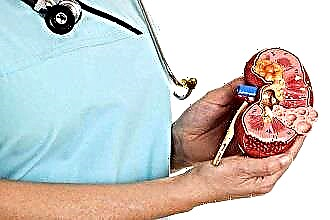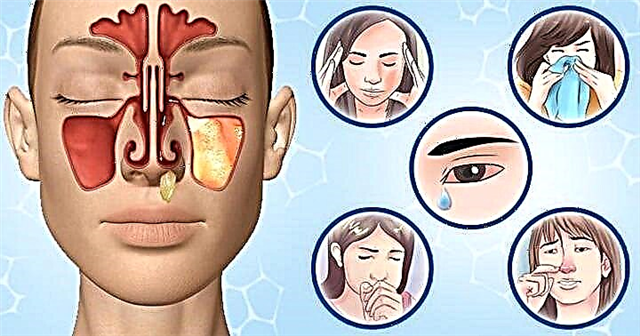Angina is an infectious disease that in most cases is caused by bacteria. Therefore, the traditional and most correct approach to its treatment is the use of antibiotic therapy. This is all the more important in childhood, when untreated tonsillitis gives serious complications in the form of systemic diseases, sometimes leading even to the disability of the child.
 Folk remedies for throat for children are symptomatic therapy that complements mainstream antibiotic treatment. With the help of folk remedies, you can reduce the intensity of inflammation on the glands, achieve a disinfecting effect, reduce the severity of sore throat and improve the general condition of the patient.
Folk remedies for throat for children are symptomatic therapy that complements mainstream antibiotic treatment. With the help of folk remedies, you can reduce the intensity of inflammation on the glands, achieve a disinfecting effect, reduce the severity of sore throat and improve the general condition of the patient.
Starting to treat the throat with folk remedies, you need to make sure that the sick child is in appropriate conditions. It is necessary to monitor compliance with strict bed rest and ensure increased fluid intake by the child. This will increase the elimination of toxins from the body and lower your body temperature. Also, modify the patient's diet by eating soft and warm foods. This will protect the throat mucosa from injury.
Medicinal herbs
Medicines obtained from medicinal plants make up the bulk of folk remedies for the treatment of throat in children. Such drugs are used for rinsing and for inhalation - these methods ensure the delivery of active substances directly to the site of injury on the tonsil mucosa. Here are some common recipes:
- As a single herbal remedy, it is recommended to take St. John's wort, chamomile, yarrow, oregano, coltsfoot, sage, etc. Pour 1 tablespoon of dry herb into 1 glass of boiling water and let the broth brew for 15 minutes.
- Take 2 tbsp. spoons of linden flowers and mix with 1 tbsp. a spoonful of chamomile. Pour this mixture with 1 glass of boiling water and leave for half an hour.
- In half a liter of water, boil 5 tbsp. spoons of horsetail. The broth should be infused for 20-25 minutes.
- Steam 2 tbsp in 1 glass of boiling water. spoons of leaves of a raspberry bush. Infuse the broth for 15 minutes.
- Peel the onions and 3 tbsp. pour spoons of husk with half a liter of water, and then boil. Let the broth cool on its own.
Important! Phytopreparations cause reactions of individual intolerance. Before you start using them, you need to make sure that the child is not allergic to this or that type of herbs.
Before flushing the throat, the solutions above  it must be cooled to room temperature and passed through cheesecloth. Rinsing should be done 5-6 times a day or even more often. With an optimal approach, pauses between procedures should not exceed 60 minutes. If you have more than one solution, alternating fluids throughout the day is helpful. This will enhance the overall healing effect.
it must be cooled to room temperature and passed through cheesecloth. Rinsing should be done 5-6 times a day or even more often. With an optimal approach, pauses between procedures should not exceed 60 minutes. If you have more than one solution, alternating fluids throughout the day is helpful. This will enhance the overall healing effect.
For gargling in children, another effective folk remedy is used that does not include herbal ingredients. To prepare it, take a glass of warm water and dissolve 1 teaspoon of kitchen salt and 1 teaspoon of baking soda in it. Then add 10-12 drops of iodine there and stir thoroughly.
Inhalation of medicinal substances involves the ingress of drugs on the mucous membrane in the form of vapor vapor. To do this, the solution must be preheated strongly and placed in a wide saucepan. The child leans over her and covers his head with a large towel so that the edges of the fabric touch the table. Then the patient begins to inhale vapors rising from the liquid intensively.
It is difficult for children to perform inhalations without interruption, so in the process you can pause for 1-2 minutes. Cover the saucepan with the same towel during the pause to avoid heat loss. For diseases of the throat, inhalations are carried out with:
- the same herbal infusions that were used to gargle;
- solutions of essential oils;
- a solution of soda with kitchen salt and iodine;
- boiled potatoes;
- chlorophyllipt solution, etc.
Compresses and mustard plasters
These treatments are referred to as warming and distracting therapy. Local heating of tissues dilates blood vessels and increases blood flow in a specific area. It speeds up the elimination of toxins, has an analgesic effect and stimulates the immune system. But with a sore throat, compresses and mustard plasters are allowed to be used only at the initial stage of the disease. When a purulent component appears in the form of deposits on the tonsils or an increase in the patient's body temperature to 380From and above, these methods of treatment are prohibited.
Compresses
 In the early stages of a sore throat, a compress is usually applied to the neck. The basis of such a bandage is a soft natural tissue moistened with an active substance, which adjoins directly to the skin of the throat. When installing the compress, the fabric is quickly covered with plastic wrap, then with a thick layer of cotton wool or wool, and fixed on top with a warm scarf or handkerchief.
In the early stages of a sore throat, a compress is usually applied to the neck. The basis of such a bandage is a soft natural tissue moistened with an active substance, which adjoins directly to the skin of the throat. When installing the compress, the fabric is quickly covered with plastic wrap, then with a thick layer of cotton wool or wool, and fixed on top with a warm scarf or handkerchief.
Diluted alcohol is most often used as an active ingredient. This solution is prepared by mixing equal volumes of water and 70% ethanol. Alternative liquids for application to the skin are alcoholic herbal tinctures or solutions of essential oils.
Important! Alcohol compresses are not recommended for children under the age of 3 years.
An additional effective remedy for compresses in children is boiled potatoes. Boil the potatoes without peeling them and mash them in a wide bowl. Add 3-4 drops of iodine and 1 tbsp. a spoonful of sunflower oil. Mix the resulting product thoroughly until a homogeneous mass is achieved, and fill a gauze bag with the mixture. The bag is placed around the child's neck and secured with a long scarf. This compress is set in the evening and lasts until the morning.
Mustard plasters
The restrictions on the use of mustard plasters are exactly the same as the contraindications for the use of compresses. But mustard plasters are placed not only on the throat area. It is useful to warm the chest, back and legs in this way. In addition, there is a widespread method of warming up the patient's body with the help of foot baths with mustard powder, washed off from mustard plasters or taken separately. In this case, the therapeutic effect is achieved through reflex interactions that provide general warming of the body.
The standard recipe for using mustard plasters looks like this:
- dry mustard plaster is immersed in warm water for 5-6 seconds;
- then it is quickly removed and applied to the patient's skin;
To reduce the intensity of burning in children, a lining in the form of a single layer of gauze is used between the skin and the mustard plaster.
- after all the mustard plasters are installed, the area of their placement is covered with a towel;
- the patient himself is wrapped in a warm blanket;
- in children, the time spent by mustard plasters on the skin is 5-7 minutes;
- after this time, the mustard plasters are removed;
- the skin at the installation site of the mustard plasters is wiped dry and smeared with vaseline oil;
- the procedure ends with the patient drinking a cup of hot tea and carefully wrapping himself up in a blanket, keeping warm.
Honey
Honey and other beekeeping products (propolis, etc.) are substances with a pronounced anti-inflammatory and antibacterial effect. This allows you to effectively use honey as an adjunct treatment for throat lesions:
- Take a saucepan in which you put equal volumes
 butter and honey. While stirring, melt these substances in a water bath. Add 1 pinch of baking soda to the mixture for every 20-25 grams of honey. Continue heating the resulting medication until foam appears. Then refrigerate the mixture and give it to your child 1 teaspoon every 3 hours.
butter and honey. While stirring, melt these substances in a water bath. Add 1 pinch of baking soda to the mixture for every 20-25 grams of honey. Continue heating the resulting medication until foam appears. Then refrigerate the mixture and give it to your child 1 teaspoon every 3 hours. - Stir 1 tbsp in 1 glass of warm water. a spoonful of honey. Pour in 1 tbsp. a spoonful of apple cider vinegar with a strength of 6%.This mixture is intended for washing the throat.
- Dissolve equal parts honey and butter in warm milk (1 tablespoon of each ingredient per 1 cup). The resulting mixture can be taken orally and used to gargle.
Important! Honey and bee products are highly allergenic compounds. Make sure your child is free of allergies before using these substances. In children under 3 years of age, such products are not recommended at all.
Oak bark
The bark of this tree contains tannins that inhibit the growth and reproduction of bacteria. Therefore, rinsing with decoctions of oak bark is effectively used in the treatment of throat diseases in the form of the following recipes:
- You will need calendula, linden blossom, oregano and oak bark in a ratio of 2: 3: 5: 10 parts, respectively. For 1 glass of boiling water, take 1 tbsp. spoon of this mixture and leave for 3-4 hours.
- Make a mixture of oak bark, medicinal sage, St. John's wort and elder flowers in equal amounts. For 1 glass of boiling water, take 2 tbsp. tablespoons of the mixture and leave for 15-20 minutes.
- Add twice the volume of oak bark to the linden tree flowers. tablespoons of the resulting mixture and leave for 30-40 minutes.
- A decoction of pure oak bark is prepared in a proportion of 1 tbsp. a spoonful of the drug in half a liter of water. Boil this mixture for 30 minutes over low heat, and then wrap the container with a warm cloth and let the solution brew for another 3 hours.
Before washing the throat with the solutions described above, cool the liquid to room temperature and strain the solid components through cheesecloth. This will protect the child's throat from mechanical injury.
Garlic
The medicinal effect of garlic is attributed to its high content of phytoncides. This is the name of specific plant substances that have a pronounced antibacterial effect. In nature, garlic uses phytoncides to ward off infection and heal infestation. Folk remedies for throat for children, including garlic, are used in the following recipes:
content of phytoncides. This is the name of specific plant substances that have a pronounced antibacterial effect. In nature, garlic uses phytoncides to ward off infection and heal infestation. Folk remedies for throat for children, including garlic, are used in the following recipes:
- Crush the peeled garlic in a bowl, and for every 100 g of gruel, take 1 glass of water. Infuse the liquid for 6 hours. Then warm up the solution and gargle the baby's throat.
- For 1 chopped garlic head, add 2 tbsp. tablespoons of 6% vinegar. Put the mixture in the refrigerator for half a day. Then add 1 tbsp to it. spoon of honey, stir and give the child 1 teaspoon every 6-8 hours.
- Take 3 tbsp. spoons of elderflower flowers, 10 crushed garlic cloves and 3 tbsp. spoons of honey. Pour the mixture with half a liter of boiling water, wrap with a thick cloth and leave for 3 hours. Then strain the liquid through cheesecloth and give the child 1 teaspoon every 2 hours.
- Chop 2 garlic cloves and add 1 cup of carrot juice to it. Prepare this mixture before meals and make sure that the child drinks the liquid half an hour before meals.
- Garlic water for oral administration is prepared from 1 head of crushed garlic, which is poured into 1 glass of boiling water. Infuse the solution for 30-40 minutes, and then give the child 1 tbsp every hour. spoon.
Important! When using garlic or mixtures with it in children, you cannot increase the amount of this product in the recipe. Too much garlic will cause an intense burning sensation in the larynx and the risk of a chemical burn in the throat.
Aloe
The action of this medicinal plant, as in the previous case, is based on phytoncides, natural antioxidants, vitamins B and C and allantoin - a local anesthetic.
- Wrap 3-4 sheets of the plant in paper and refrigerate for 7 days. Then turn the leaves into gruel using a meat grinder or blender. Dilute the gruel with 0.5 liters of water and boil. Then cool the liquid, strain through cheesecloth and use to wash the throat.
- It is useful to gargle a child's throat using aloe juice. Squeeze out the liquid from the volume of aloe that you have and pour 20 ml of water into each spoon of it. Before the procedure, add to 1 glass of solution
 a pinch of baking soda and 3 drops of iodine. Water, if possible, is replaced with decoctions of phytopreparations.
a pinch of baking soda and 3 drops of iodine. Water, if possible, is replaced with decoctions of phytopreparations.
With angina, folk remedies will help improve the immune function. In children, it is recommended to use natural immunostimulants in the form of tincture of ginseng, eleutherococcus and / or echinacea. Ensure that your child's diet is adequate for vitamins. Vitamins (especially vitamin C) are catalysts for immune responses. A child's food should contain a lot of protein - this building material for the immune system.
Important! If the clinical symptomatology of angina while using the above folk remedies and techniques continues to bother the child for more than 3 days, it is necessary to consult an ENT specialist and start using the correctly selected antibiotics.

 butter and honey. While stirring, melt these substances in a water bath. Add 1 pinch of baking soda to the mixture for every 20-25 grams of honey. Continue heating the resulting medication until foam appears. Then refrigerate the mixture and give it to your child 1 teaspoon every 3 hours.
butter and honey. While stirring, melt these substances in a water bath. Add 1 pinch of baking soda to the mixture for every 20-25 grams of honey. Continue heating the resulting medication until foam appears. Then refrigerate the mixture and give it to your child 1 teaspoon every 3 hours. a pinch of baking soda and 3 drops of iodine. Water, if possible, is replaced with decoctions of phytopreparations.
a pinch of baking soda and 3 drops of iodine. Water, if possible, is replaced with decoctions of phytopreparations.

